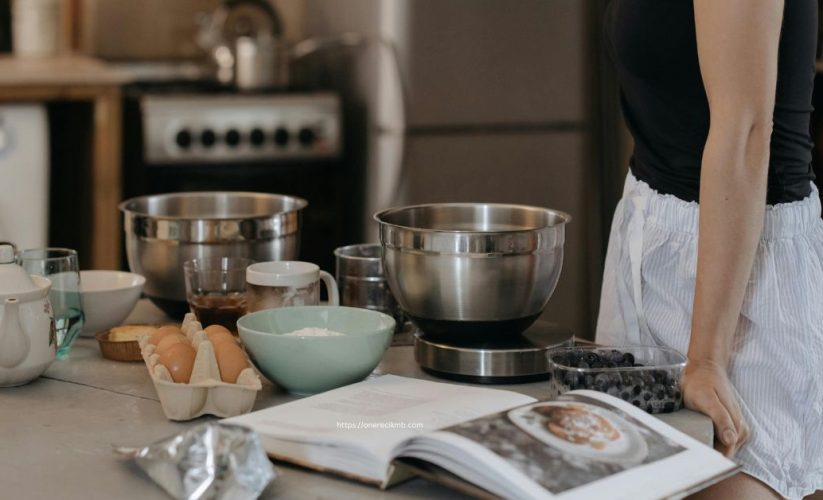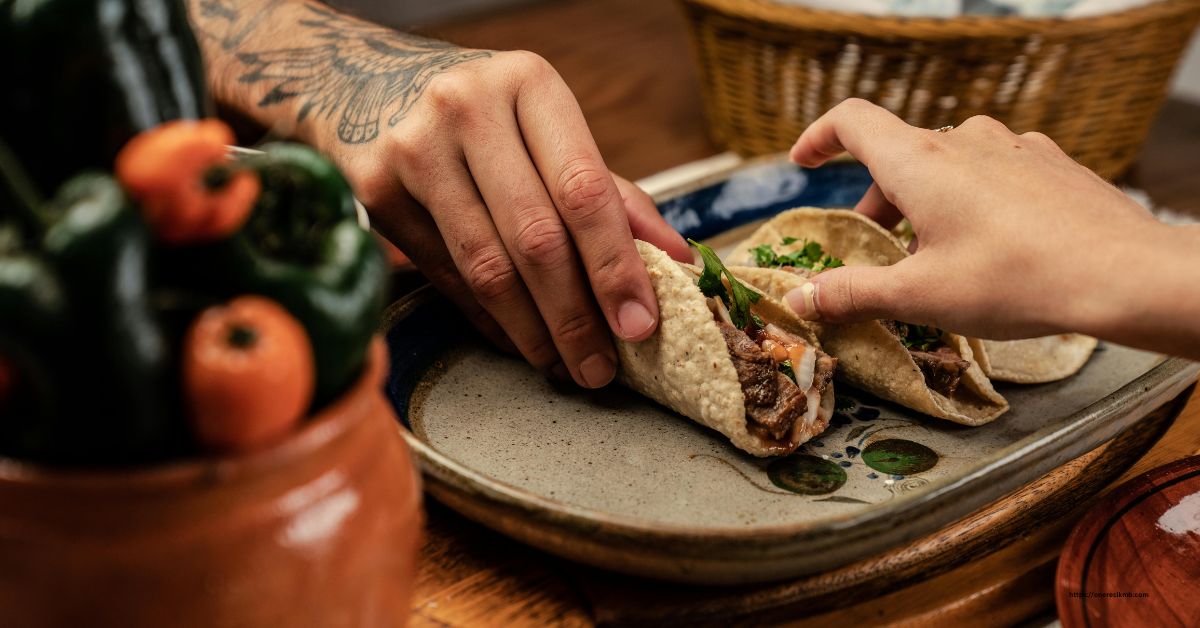
Best Bengali Fuchka Recipe make in 30 minutes
Bengali Fuchka, a popular road food that originated in Bengal, is just an explosion of flavors and textures in 30 minutes. Known for its crispy puris filled with spicy, tangy, and flavorful fillings, this dish is loved by all street food lovers. This thorough guide will take you through every step in making an authentic Bengali Fuchka recipe at home. Get ready to take a culinary walk that promises to impress your taste buds and leave guests impressed.
What are the key differences between Bengali Fuchka, Pani Puri, and Golgappa?
Bengali Fuchka Fillings and Flavor: The fillings used for Fuchka are spicier, based on black gram and chickpeas, and contain more chilies and spices. Tangy, spicy tamarind water; the strong flavor of the pungent type; usually more chili heat in the fillings.
Pani Puri or Golgappa Fillings and Flavor: Indian Street food, or Pani Puri/or Golgappa, can be anything from sprouted moong beans and white peas to potatoes that have a mild taste in general. Pani Puri or Golgappa—refreshing minty taste in their tamarind water; tangy to sweet flavors.
Ingredients List for Bengali Fuchka, Phuchka, Puchka, or Fuska Recipe
For the puri (crispy shell):
- Semolina (sooji or rava): 1 cup.
- All-purpose Refined flour (maida): 2 tablespoons.
- a pinch of baking soda.
- teaspoon salt, 1/4.
- Warm water is needed to knead the dough.
- Oil: to fry for deep frying.
For the filling:
- Chickpeas or Black Gram (Kala Chana), boiled, 1 cup.
- Potato, Boiled and Mashed, 1 Medium.
- Onion, finely chopped, 1 small.
- Green chilies, finely chopped, 2 nos.
- Fresh Coriander Leaves, Chopped: 2 tbsp.
- Roasted Cumin Powder: 1 tsp.
- Chat Masala: 1 tsp.
- Black Salt/KKala Namak: 1 tsp.
- Tamarind Chutney: 2 tbsp.
- Salt-to-Taste.
For the tamarind water:
- tamarind pulp, 1 cup.
- Water: 4 cups.
- roasted cumin powder, 1 teaspoon.
- chaat masala: 1 teaspoon.
- black salt, 1 teaspoon.
- red chili powder: 1/2 teaspoon.
- fresh mint leaves (finely chopped): 2 tablespoons.
- fresh coriander leaves (finely chopped): 2 tablespoons.
- sugar (optional): 1 teaspoon.
How to make Bengali Fuchka: Follow the instructions step by step
Preparing the Puri for Bengali Fuchka Recipe: Remember, Fuchka’s central part is known as a puri; it should be crispy and golden to taste.
Mixing the Dough: Take one cup of suji, 2 tablespoons of maida, 1 pinch of soda bicarbonate, and 1/4 teaspoon salt in a big bowl. Gradually add warm water little by little, kneading the mixture. With this done right, the dough should be firm but very elastic—something that may take about ten minutes. The warm water activates gluten in the flour, hence making the dough flexible.
When the dough is ready, cover it with a wet cloth and leave it aside for at least thirty minutes. This helps to ensure full absorption of water into the semolina, making the puris crispy.
Rolling the Dough: Divide the rested dough into small balls of equal size each. The size approximates that of a marble ball. On a smooth surface slightly sprinkled with flour, roll out these balls thinly and roundly. Its diameter should fall between 2 and 3 inches, while its thickness should be extremely thin without tearing them apart. Equal thickness ensures even puffing during frying.
Frying the Puris: Heat oil in a wok or deep pan over medium-high heat until quite hot. To test if it is properly heated up, drop a little dough into it to see what happens when cooking oil gets poured on top, then boiled immediately when ready.
Gently push down on them using a slotted spoon before lowering the rolled puris into the hot oil. This makes them puff up at once slightly. Keep turning them occasionally until they become brown and crisp on all sides, which takes approximately thirty to sixty seconds per bunch, depending on how long you cook them.
Take them off the oil onto a paper towel right away to drain out the remaining oil. Let them cool fully since they continue to get crisper during the cooling process.
Crafting the Filling:
Bengali Fuchka filling is made up of chickpeas, potatoes, and spices. These ingredients create a delicious balance between starchy flavors and tangy ones for the puris, which have to be crunchy.
Preparing the Chickpeas/Black Gram for Bengali
Fushka, Phuchka, Puchka, and Fuska:
- Soak 1 cup of chickpeas or blackgrams overnight or for at least 8 hours so as to ease the cooking process.
- Drain the soaked chickpeas or blackgrams and put them in a pressure cooker, covering them with enough water and adding salt.
- Cook until they are ready (15–20 minutes). If you don’t have a pressure cooker, then boil them on the stove, which will take about 45–60 minutes, but remember that time depends on altitude too.
Mixing the filling:
- Take cooked chickpeas or black grams in a large bowl along with one medium potato boiled and mashed. It acts as a binder while the filling becomes creamy with starch from potatoes.
- Add one small, finely chopped onion, two finely chopped green chilies, and two tablespoons of fresh coriander. These allow for some crunchiness when eating Fuchka.
- Fold in this mixture of 1 teaspoon roasted cumin powder, 1 teaspoon chaat masala powder, and 1 teaspoon black salt, along with regular salt to taste, into your dish. This combination contributes to an overall zesty flavor.
- Add two tablespoons of tamarind chutney for a tangy twist; mix until everything is well combined.
Adjusting the seasoning:
- Taste the filling and adjust the seasoning if you need it. More chaat masala, salt, or tamarind chutney can be added depending on your preference.
- If the filling seems too dry, you can put in either a bit more tamarind chutney or some drops of water to make it come together.
Making Tamarind Water:
Bengali Fuchka’s tangy and spicy taste stems from its tamarind water, known as “Pani.” It is an invigorating concoction that balances out the richness of the stuffing and the freshness of the puri.
Preparing Tamarind Pulp for Bengali Fushka Recipe:
If you are using store-bought tamarind pulp, skip this step. If you are making it at home, soak a small, ball-sized piece of tamarind in 1 cup of warm water for around 15–20 minutes.
Soak it first in warm water for 15 minutes before mashing with your fingers and extracting out all fiber and seeds through a sieve. You should have about 1 cup of tamarind pulp left now.
Mixing Tamarind Water:
- In a big bowl, combine 4 cups of water with tamarind pulp. Dilute your pulp properly by ensuring thorough stirring.
- Put in one teaspoon each of roasted cumin powder, chaat masala, black salt, and half a teaspoon of red chili powder. These spices give heat and flavor.
- Add two tablespoons of chopped fresh mint leaves and two tablespoons of chopped coriander leaves. They add fragrance to it.
- Add one teaspoon of sugar if you like it slightly sweetened. This step is optional but may help to balance out the sourness from tamarinds, though they already contain enough sweetness naturally.
Adjusting Flavor: Stir the mixture well, then taste. If need be, season it as well. More salt, sugar, or spices can be added based on preferences. Let the tamarind water chill in the refrigerator for at least an hour. The flavors will develop more and become more refreshing when chilled.
Assembling the Bengali Fuchka Part
Assembling Bengali Fuchka is the most exciting part of making this dish. Here, all your efforts come together to create something that not only tastes great but also looks good.
Cracking Puri: Take each puri and, with your thumb or a spoon, tap gently in the center until a small hole is formed. Be careful not to crack the whole structure; make sure the hole is just enough for filling.
Filling Puri: Put some filling into each puri. It should fill up a bit without overrunning. Typically, 1-2 teaspoons per puri serve best, as they fill them accordingly.
Dipping in Tamarind Water: Just before serving, dip these filled puris into chilled tamarind water. Ensure that tamarind water gets into every puri, but don’t leave it soaking for too long; otherwise, they will turn soft. Serve immediately after dipping so that the crispiness of the puris is retained.
Serving: Serving: You place filled and dipped puris on a big serving plate or platter. You may also select to have tamarind water served in another bowl, allowing people to dip their own Puchkas. Garnish with additional chopped coriander or sprinkle chaat masala if you like.
Tips and Tricks of Bengali Fuchka:
Becoming an expert in Fuchka requires attention to detail and a few handy tips to ensure everything turns out perfectly.
Consistency of Dough: Make sure that the dough is hard enough but not too dry; this will enable puris’ puffing up and crisping.
Even Rolling: Puri should be rolled evenly. Thinner ones blow up more easily and become crispier upon frying.
Oil Temperature: Fry them on medium-high heat consistently. It burns when it is very hot or fails to puff up due to being cooler than required.
Seasoning: The filling as well as the tamarind water poured into the Fuchka should be seasoned according to your taste preference for sourness, saltiness, and hotness.
Serving Fresh: Have the Fuchka as fresh as possible because it tastes best that way. So put them together and serve immediately, keeping Puri’s crunchiness intact.
Storing Puris: If you have leftover Puris, keep them in an airtight container so they stay crispy. They can last for several days without spoiling.
Herb Variations: Use various herbs, like mint or coriander, in stuffing for a different taste experience.
Flavor Infusions: To make a tart ingredient, add lemon juice to the filling mixture.
Chilled Water: Keep tamarind water cool at all times by refrigerating it first before use. You could even put ice cubes in it to maintain its cold temperature throughout its consumption time.
Serving suggestions for Bengali Fushka
Fuchka is a popular recipe that can be served in various settings, from casual get-togethers to festival occasions.
Fuchka or Bengali Street Food Style: In individual bowls, serve Fuchka on a big tray with tamarind water. Let your guests build their own Fuchka for an interactive experience.
Party Platter: For the guests to mix and match, create a Fuchka bar with various fillings and flavored waters such as mint water, spicy water, etc.
Family Feast: Serve Fuchka as an appetizer or snack during family meals. It’s a fun way to start meals, bringing everyone together.
Nutritional Information: A detailed of the key ingredients in Bengali Fuchka
Chickpeas (per 1 cup cooked)
- Calories: 268.
- Protein: 17 grams.
- Fat: 5 grams.
- Carbohydrates: 47 grams.
- Fiber: 14 grams.
- Iron: 4.9 mg (26% DV).
- Magnesium: 77 mg (20% DV).
- Potassium: 478 mg (14% DV).
- Vitamin B6: 0.3 mg (11% DV).
Potatoes (per 1 medium, boiled)
- Calories: 115.
- Protein: 5 grams.
- Fat: 0.1 grams.
- Carbohydrates: 25 grams.
- Fiber: 3 grams.
- Vitamin C: 21 mg (22% DV).
- Potassium: 625 mg (18% DV).
- Vitamin B6: 0.5 mg (15% DV).
Onions (per 1 small)
- Calories: 30.
- Protein: 1.1 grams.
- Fat: 0.1 grams.
- Carbohydrates: 7 grams.
- Fiber: 1 gram.
- Vitamin C: 8 mg (6% DV).
- Folate: 10 mcg (2% DV).
Coriander (per 1 cup)
- Calories: 5.
- Protein: 0.5 grams.
- Fat: 0.2 grams.
- Carbohydrates: 1 gram.
- Fiber: 0.3 grams.
- Vitamin A: 3384 IU (68% DV).
- Vitamin C: 15 mg (22% DV).
- Vitamin K: 65 mcg (77% DV).
- Tamarind Pulp (per 1 tablespoon).
- Calories: 25.
- Protein: 0.3 grams.
- Fat: 0.2 grams.
- Carbohydrates: 8 grams.
- Fiber: 0.8 grams.
- Iron: 0.6 mg (2% DV).
- Magnesium: 8 mg (2% DV).
- Potassium: 80 mg (2% DV).
Health benefits of eating Bengali fuchka
Good Source of Fiber
When the filling is made from chickpeas or black gram, which are both excellent sources of dietary fiber, the Bengali Fuchka becomes rich in fiber. Fiber aids digestion as well as maintaining bowel movement to prevent constipation. Additionally, this nutrient promotes satiety, which helps one manage their weight by preventing overeating.
Contains Proteins
Normally found in chickpeas and black grams used in Fuchkas, plant proteins are important for building as well as repairing body tissues such as enzymes and hormones. Overall body functioning also relies on proteins, meaning that vegetarians and vegans, especially those who don’t take any animal-based protein sources, should know that they rely on proteins a lot.
Contains vitamins and minerals
This means that in each Fuchka there are a few ingredients such as chickpeas, potatoes, onions, and fresh coriander, which are rich in essential vitamins and minerals. Chickpeas provide iron, magnesium, potassium, and B-complex vitamins. Potatoes give vitamin K and B6. Onions contain vitamin C,B complex, and antioxidants. Coriander contains A, C, and K vitamins.
Rich in antioxidants
Spices like cumin powder or chaat masala used to make fuchkas contain antioxidants that help combat the adverse effects caused by free radicals leading to long-term illnesses such as cancer, as well as inflammation reduction, thus preventing heart disease, among others.
Low-fat content in Bengali Fuchka
If homemade, using less fatty oil for frying or baking, Fuchka can be a rather safe choice with low levels of fat. The low-fat content is supplemented by the use of chickpeas and potatoes as the major ingredients for the filling, especially when compared to other fried snacks.
Tamarind Water: A Source of Hydration
The use of tamarind water (pani) in making fuchkas serves both purposes. Therefore, it’s a good body fluid replenishment, taking away dehydration cases that may emanate from hot weather conditions.
Good for digestion
Tamarind, which is used to make tamarind water, has digestive benefits such as bile production stimulation, while chickpea fibers help maintain digestion health.
It helps with weight control.
Protein and fiber present in chickpeas and potatoes make people feel full longer after meals, thus preventing overeating. Additionally, this blend can assist in weight loss efforts since spices boost metabolism.
Regulates blood sugar levels
This carbohydrate quality makes them suitable for regulating blood sugar levels; thus, they are recommended for people with diabetes mellitus or those who would like to check their blood sugar levels.
Promotes heart health
Chickpeas and potatoes have high fiber contents, along with potassium, vitamin C, and B6, which all support cardiovascular health through the maintenance of normal cholesterol levels, regulation of blood pressure, and enhancement of overall cardiovascular fitness.
Frequently Asked Questions About Bengali Fushka Recipe
Q. What is Fuchka?
Ans. Bengali Fuchka captures the essence of the colorful culinary traditions of Bengadeshis beautifully using crispy puris filled with hot spicy fillings and tangy tamarind water that appeals to all age brackets.
Q. Is it called Fuchka, Phuchka, Puchka, or Fuska?
Ans. The Bangladeshis also call it fuchka or fuska. Alternate Phuchka: Puchka is commonly used in West Bengal and some parts of India.
Conclusion
Yes!! Making Bengali Fuchka at home is a rewarding experience that brings street food flavors right into your kitchen. With this step-by-step guide, you will be well on your way to becoming adept at making these popular snacks. Every aspect of it, from the crispy puris to the tangy tamarind water, contributes toward creating a symphony of flavors that will leave you and your buddies wanting more next time.
So, I hope now you all understand how to make a quick and easy Bengali Fuchka, Puchka, or Phuchka recipe in 30 minutes, and I have explained everything to you in detail. If you want more recipe information, then you can also read our other recipe article and tell me by commenting below.








